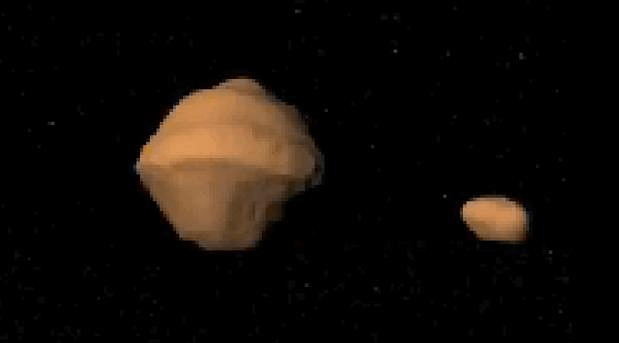Bengaluru: A massive asteroid and its tiny moon will pass close to Earth this weekend. However, even at its closest approach, the asteroid — 1999 KW4 — will be over 45 lakh kilometres away, and will not be visible to the naked eye.
The over 1.5-km wide and equally long asteroid and its 500-m radius moon will come close to Earth at 4:35 am IST Sunday (11:05 pm UTC Saturday).
What is this asteroid?
The 1999 KW4 was discovered, as its name suggests, on 20 May 1999, by Lincoln Near-Earth Asteroid Research (LINEAR) project. LINEAR is a collaboration of NASA, the US Air Force, and Massachusetts Institute of Technology (MIT), and was formed to track objects that come near Earth and are potentially hazardous space travellers that could intersect Earth’s path.
The asteroid was imaged extensively by radar at the Goldstone Observatory in US and the Arecibo Observatory in Puerto Rico in 2001, when it had moved past Earth. Astronomers had discovered that the asteroid resembled a spinning top, with a ridge running along the equator — like a walnut.
Since the asteroid and its moon are two bodies moving together, the duo form a binary system. This will be the closest that a binary system has ever approached Earth.
The YORP effect
The astronomers will use this weekend’s approach to see if 1999 KW4 follows the Yarkovsky–O’Keefe–Radzievskii–Paddack (YORP) effect. This is a phenomenon that changes a celestial body’s rate of rotation and shape of poles because of the effects of solar radiation.
The YORP effect states that because solar radiation is absorbed, reflected or thermally emitted as photons, over a period of time, the constant emission or absorption of mass-carrying photons affects how a celestial body rotates.
This effect has been observed in two small asteroids before. The 54509 YORP asteroid doubles its spin rate in 6,00,000 years, and also changes its axial tilt. In 2013, astronomers thought the asteroid P/2013 R3, which was breaking apart, was doing so due to the high rates of rotation caused by the YORP effect. It is believed that the YORP effect is also one of the causes for the creation of binary asteroids such as the 1999 KW4.
Also read: NASA spacecraft finds signs that highrise-sized asteroid near Earth once had water



